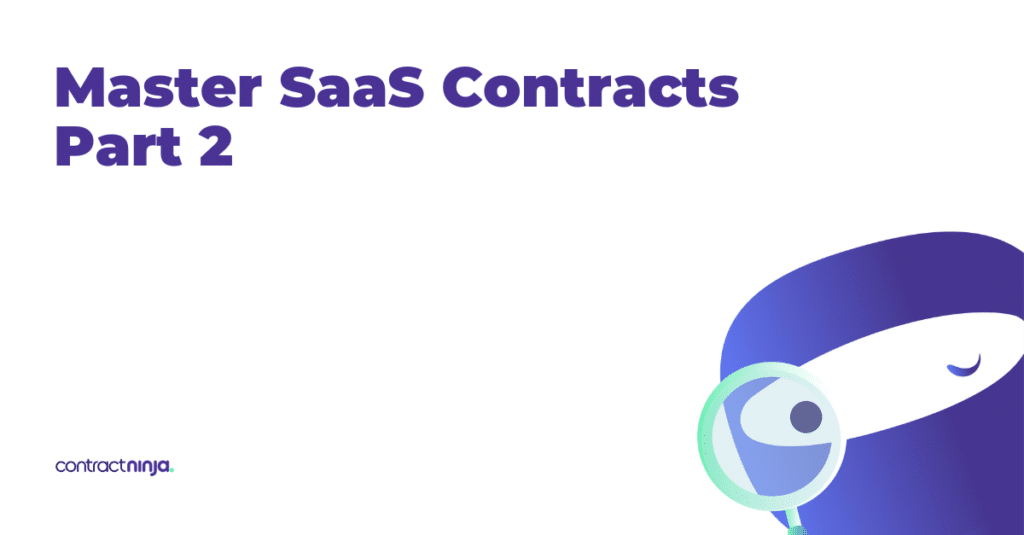Home » Publications » Master SaaS Contracts Part 2

This article is published with permission from the editor of De Rebus. This article was first published in De Rebus in 2023 (Nov) DR 13. The original article was also published on the De Rebus website at www.derebus.org.za on 1 November 2023.
The 1st article discussed the difference between Software Licensing and the Software as a Service (SaaS) model.
In this article, we will dive deeper into the intricacies of SaaS contracts by looking at access and suspension rights, restrictions relating to the use of the SaaS and the provider’s right to make changes to the SaaS.
When it comes to access to the SaaS, it is important to be clear on who will regarded as an “Authorised User”. Will, for example, the customer’s affiliates also be able to access the SaaS? Will only named users be able to access the SaaS, or is it a concurrent users model?
Next, it is important to be clear when access to the SaaS can be suspended.
Generally, the provider would want the right to suspend access if there is non-payment or the Customer does not comply with the Agreement or the Acceptable Use Policy without any prior notice.
From the Customer’s perspective, especially where their reliance on the SaaS goes beyond mere utility, and the SaaS is deeply integrated into their operations, the customer would want the suspension of access to the SaaS to be the last resort.
Considering the above, it is important to find a balance when it comes to suspension rights with due regard to the customer’s reliance on the SaaS for its operations.
The right to change the SaaS is often a topic of negotiation.
This right affects both the provider’s ability to innovate and evolve its services and the customer’s ability to rely on and integrate with those services.
From the provider’s perspective, it wants to be able to update and enhance its services, ensuring that they remain competitive, functional, and secure. This could involve adding new features, enhancing user interfaces, or improving backend processing.
From the customer’s perspective, frequent changes, even if they’re improvements, can disrupt its workflows, necessitate unexpected adjustments, or require additional training and onboarding. Also, many businesses integrate SaaS offerings with other systems. Changes to the SaaS can break these integrations, leading to operational issues and additional costs.
As a compromise, the Parties generally agree that any changes to the SaaS may not materially reduce the functionality of the SaaS and that changes may only be made to maintain or enhance the quality or delivery of the SaaS to its customers, the competitive strength of or market for the SaaS, or the SaaS’ cost efficiency or performance.
If you are the customer, ensure you are provided advanced notice of any changes. In extreme cases, you may also consider negotiating a termination right if the changes to the SaaS have a material impact on your business.
The provider usually includes various restrictions relating to the use of the SaaS. These restrictions can be included in the SaaS agreement or in a policy (often referred to as the Acceptable Use Policy (“AUP”).
An AUP is generally the way to go from the provider’s perspective. This is because a policy can generally be updated unilaterally by the provider. Customers are generally hesitant to agree to anything which can be updated without their consent.
A compromise may be to provide that notice of any updates to the AUP must be given to the customer, and if the customer does not object within a provided timeframe, the AUP will be regarded as updated.
These restrictions (whether contained in the SaaS agreement or the AUP) generally address illegal or harmful activities such as intellectual property (“IP”) theft, copying, behaviours that violate laws, and similar acts. As always, the devil may be in the details, and these provisions require careful consideration from the Customer’s side.
There may be usage limits to prevent any user from overloading the system, which could affect other users. Now, this may seem like a reasonable restriction, but from the customer’s perspective, you don’t want a situation where the provider fails to commission sufficient resources on its side and then says it’s a single user causing the slowdown of the SaaS.
Beyond the standard restrictions, there may also be specific restrictions on how the SaaS can be used. For example, there may be restrictions relating to integrations. Businesses these days use multiple SaaS offerings, and often, one of the main reasons a SaaS offering is chosen above another is its ability to integrate with another system. From the customer’s perspective, it is therefore important to carefully scrutinise the restrictions relating to using the SaaS.
Some providers may also prohibit using the SaaS to create a competitive product or service. This makes sense. However, if there is even a remote possibility that the customer will be using the SaaS to create a product or offer which may be regarded as competitive to that of the provider, agree an exclusion to the provision before signing up for the SaaS.
When negotiating access to the SaaS, changes to the SaaS and restrictions placed on the use of the SaaS, it is important to understand for which purpose the customer will be using the SaaS and how dependent the customer’s operations will be on the SaaS.
The next article will focus on important negotiation aspects relating to the limitation of liability, warranties, indemnification and intellectual property. Stay tuned for these crucial aspects to address legal risks and allocate responsibility.
ContractNinja is a proudly South African technology company which has developed powerful online contract builders which use the latest technology to help legal practitioners create bespoke contracts in less time and more accurately. It does this by guiding a user through an easy-to-use dynamic and interactive process using advanced decision trees and conditional logic to ensure the result (the contract) is tailored to your needs.

Master Contracts, elevate your career. Join the global movement of shaping the standard of contracts.
South Africa
194 Bancor Avenue Menlyn, Colab Building, Waterkloof Glen, Pretoria, 0181
United States


Form part of the spearhead movement of shaping the global standard for tech contracts.